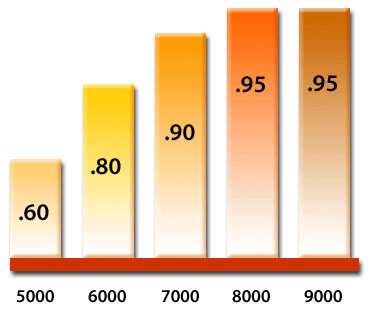| Lesson 11 | Improving the buffer cache hit ratio |
| Objective | Improve the cache hit ratio. |
Improving the buffer cache hit ratio
When using an Oracle RDBMS, if your buffer cache hit ratio[1] is poor, you can usually improve it by "increasing the size of the buffer cache".
The size of the buffer cache is controlled by the db_block_buffers initialization parameter.
Here is the process for achieving this using the latest version of Oracle 11g.
In Oracle 11g, the method for tuning the buffer cache has evolved. The `db_block_buffers` parameter is deprecated, and the buffer cache size is now managed using the `DB_CACHE_SIZE` initialization parameter. Here's the process to adjust the buffer cache size:
Steps to Increase the Buffer Cache Size in Oracle 11g:
Notes:
In Oracle 11g, the method for tuning the buffer cache has evolved. The `db_block_buffers` parameter is deprecated, and the buffer cache size is now managed using the `DB_CACHE_SIZE` initialization parameter. Here's the process to adjust the buffer cache size:
Steps to Increase the Buffer Cache Size in Oracle 11g:
-
Connect to the Database as SYSDBA:
-
SQL> CONNECT / AS SYSDBA
-
-
Check the Current
DB_CACHE_SIZE:-
You can query the current buffer cache size with the following command:
SQL> SHOW PARAMETER db_cache_size;
-
You can query the current buffer cache size with the following command:
-
Modify the
DB_CACHE_SIZEParameter:-
To increase the size of the buffer cache, use the
ALTER SYSTEMcommand. The size can be specified in bytes, kilobytes (K), megabytes (M), or gigabytes (G).SQL> ALTER SYSTEM SET db_cache_size = 512M SCOPE=BOTH; -
SCOPE=BOTH: This change will be applied immediately and will also be persistent across database restarts. You can useSCOPE=MEMORYfor a temporary change orSCOPE=SPFILEif you want to make the change permanent but not apply it until the next startup.
-
To increase the size of the buffer cache, use the
-
Verify the Change:
-
Re-run the query to check if the new size has been applied.
SQL> SHOW PARAMETER db_cache_size;
-
Re-run the query to check if the new size has been applied.
Notes:
-
Automatic Memory Management (AMM): If you are using Automatic Memory Management (AMM) in Oracle 11g, the
DB_CACHE_SIZEparameter will be managed dynamically by Oracle. In this case, you may need to adjust theMEMORY_TARGETandMEMORY_MAX_TARGETparameters instead. - Avoid Over-Allocating Memory: Ensure you have enough memory on your server to accommodate the increased buffer cache size without causing performance issues.
Oracle 12c DBA
Legacy Tuning for Oracle 8
If your buffer cache hit ratio is poor, you can usually improve it by increasing
the size of the buffer cache. The size of the buffer cache is controlled by the

db_block_buffers initialization parameter. If you're
going to adjust the size, then you should follow this process:
- Note the current cache hit ratio.
- Increase the
db_block_buffersparameter. - Stop and restart the database.
- Note the new cache hit ratio.
- If a significant increase has occurred, go back to step 2 and increase the buffer cache some more.
- If a significant change has not occurred, back out the current change and run with the previous buffer cache size.

| First vertical bar | A buffer cache size of 5,000 results in a hit ratio of 0.60. |
| Second vertical bar | Increasing the cache size to 6,000 buffers yields a large increase in the hit ratio, which is now 0.80. |
| Third vertical bar | Going up to 7,000 buffers yields a smaller increase, and the hit ratio is now 0.90. |
| Fourth vertical bar | Further increasing the cache to 8,000 buffers yields an even smaller increase, taking the hit ratio to 0.95. |
| Fifth vertical bar | Increasing the cache from 8,000 to 9,000 buffers results in no increase to the hit ratio. You should undo this change and run with an 8,000 buffer cache. |
You may be tempted to increase the buffer cache beyond the point at which the hit ratio levels off. Don't do that--there's absolutely no benefit.
you will just be wasting memory that you may be able to use profitably elsewhere.
In the next lesson, you will compute the buffer cache hit ratio for a specific period of time.
In the next lesson, you will compute the buffer cache hit ratio for a specific period of time.
[1]
buffer cache hit ratio: In Oracle RDBMS, the "buffer cache hit ratio" is a key performance metric that indicates the percentage of data block requests satisfied from the buffer cache in memory, avoiding the need to read from disk. A high buffer cache hit ratio generally means better performance as it reduces expensive disk I/O operations and speeds up data retrieval.